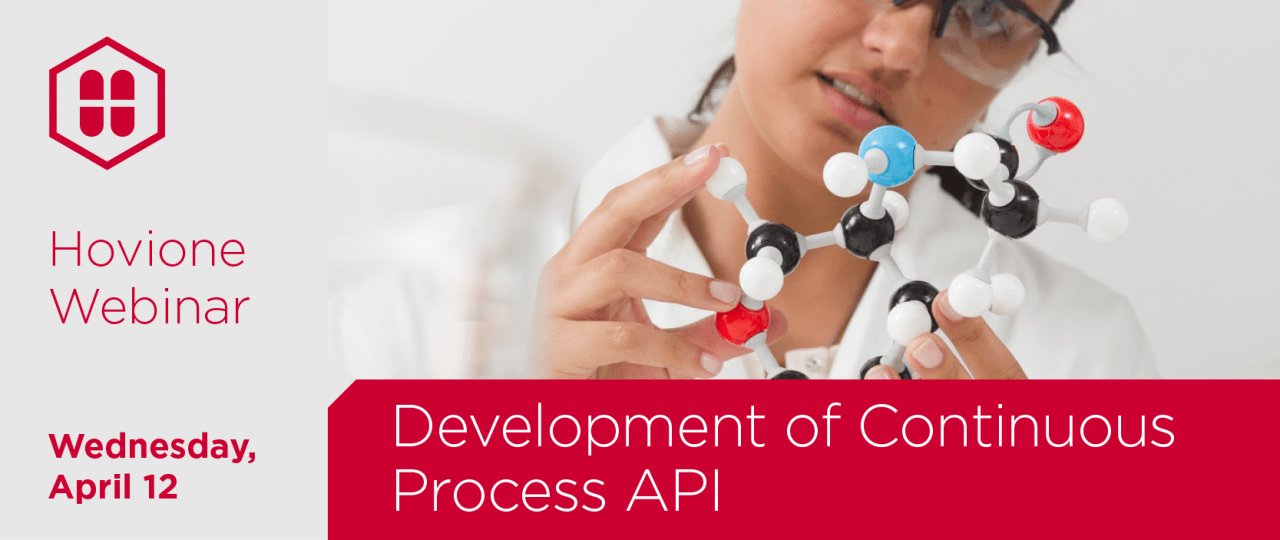Press Room
Webinar - Development of Continuous Process API

| Speakers |
|---|
| Rudi Oliveira - Chemist, Continuous Manufacturing |
| Ruth Morais - Engineering, Continuous Manufacturing |
Flow chemistry for the manufacturing of active pharmaceutical ingredients (APIs), which has been utilized in numerous industries for many decades, is attracting significant attention from the pharmaceutical industry. The main benefits associated continuous processing are reduced development time and operating costs, greater process safety when employing hazardous chemistries and improved process efficiencies, control and product quality. Hovione are focused on the development and implementation of capabilities for continuous processing.
So, a practical methodology to perform continuous process development of API’s was built as a systematic workflow which involves several steps: idea screening to identify drivers and objectives, followed by a technical evaluation to select an appropriate technology and identify risks; passing through a process understanding and development phase at laboratory scale to assess the feasibility of converting batch process into a continuous one and ends up with scale-up, engineering studies and industrialization.
Additionally, this workflow is embedded with a QbD rationale, resorting to mechanistic and statistical modelling to build process understanding and assist scale-up activities. Furthermore, kinetic models can be used along the process lifecycle to assist risk evaluation and process troubleshoot.
Learn more with this webinar, where practical cases that focus on how Hovione apply this workflow are presented.
What can you learn from this webinar?
-
Use of kinetic modeling to support continuous process development
-
Lessons learned from converting batch to continuous processes
-
How Hovione used structured workflow to perform continuous process development of APIs
Join Hovione's Webinar NOW!
| Time Option 1 | Time Option 2 |
| 2:00 pm (GMT) 10:00 am (EST) |
4:00 pm (GMT) 8:00 am (PST) 11:00 pm (EST) |

